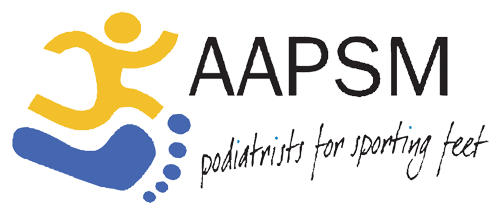Blisters
Blisters on your feet can be very painful.
But thankfully our specialist team at Gold Coast Foot Centres can treat them, identify the cause, and suggest ways to prevent them from coming back.
If you are afflicted with this condition, you don’t have to suffer anymore. Please contact our experienced podiatrists for help today.
What is a blister?
Generally, blisters form on the outer layers of your epidermis as a response to constant friction.
They comprise a fluid-filled sac and develop when a part of your skin comes in contact with another object, such as the inside of your footwear. The repetitive movement of the two results in rubbing that eventually causes your skin’s thinner layers to separate. This creates a gap that your body fills with fluid to form a sac.
Blisters can be very painful and can make walking quite uncomfortable until they clear up, depending on the footwear you have on.
Who Can Get Blisters on Their Feet?
Anyone can get blisters on their feet, but they are most prevalent in people who experience prolonged skin irritation from friction.
Typically, this could be athletes, military personnel, and those who do a lot of walking in their jobs.
What are the Causes of Blisters?
Blisters result from the friction caused by feet continually rubbing against a rough, hard surface or a sock or shoe.
This can be caused by a range of issues, including;
Footwear that doesn’t fit properly
Excess sweating in your socks
Putting on incorrect socks for a specific activity
Heat within the footwear
Vigorous and prolonged sporting activity or exercise
Wearing-in new shoes
Deformities in your foot
Rubbing against rough or hard materials.
What are the Symptoms of Feet Blisters?
Blisters on your feet manifest as raised sacs that are full of clear fluid or blood.
They can cause moderate to severe pain, especially if the blister is hot or painful and you may also find there is a reddened patch or streaks of skin around it.
The skin around the blisters might be itchy, and if they become infected, you may notice a milky-white pus seeping from them.
How Can Blisters Be Treated?
While you might be tempted to pop the blister, we advise against this as it might cause increased pain and make the wound susceptible to infection and bacteria.
What we suggest, however, is that you cover the entire blister with dressing or a band-aid because doing this will allow it to heal naturally without incurring further irritation.
Overall, it should take a few days for this to happen, but only if you remove the friction source. Once that has gone, the fluid within the sac will dissipate as the new skin grows underneath it.
Should the blister pop of its own accord, leave the dead skin as it is and just wash the area with Betadine, antiseptic wipes and water. Again, you should cover it with a Band-Aid to expedite the healing process.
What Might Happen if I Ignore a Blister?
Blisters happen for a reason, i.e. friction. So, if you do take action, it is possible that persistent pain might prevent you from being able to play sports, exercise and or walk freely.
It might also result in infection, especially if you are immunocompromised or a diabetic and could potentially have more serious consequences, such as scarring or further injury.
When Should I See a Podiatrist?
Although most blisters will heal themselves without requiring you to visit a podiatrist, there are some circumstances where it might be prudent to seek professional treatment and advice from our expert team.
At Gold Coast Foot Centres, we can help you by applying professional dressings or debriding the hard skin surrounding the blister if needed.
We can also identify what is causing the friction and how to remove it, as well as give you advice on what socks and footwear are most appropriate for your feet.
How Can I Prevent Foot Blisters?
The best way to treat blisters is to not get them in the first place and there are several tactics you can employ to do that.
You should always wear shoes that properly fit you and, therefore, reduce any rubbing or friction against your skin.
Additionally, you should always wear socks where possible and ensure you have the right ones on for your activity, i.e. sports socks for exercise, training and sporting activities.
Avoid wearing nylon, polyester and synthetic socks, as they are more conducive to blisters forming and ensure your feet are always as dry as they can be. If your feet are prone to sweating, change your socks regularly.
Other Similar Conditions
It is worth noting that there are some other conditions that have similar symptoms to friction-related blisters.
They include:
Adverse reactions to medications or allergies
Burns
Contact eczema and dermatitis
Foot and mouth disease
Fungal skin infection
Infection
Impetigo (skin bacterial infection)
Vasculitis
For this reason, it is worth contacting our specialist team of podiatrists to confirm the diagnosis and ensure your issue is being properly treated.
Are You Worried About Your Foot Blisters?
If you are worried about the causes of your foot blisters and want to seek the professional opinion of our expert podiatrists, please contact Gold Coast Foot Centres today.
Here are the contact details of all our locations on the Gold Coast.
FAQs
-
Friction blisters manifest on your foot as small pockets of elevated and thin skin that are full of translucent, plasma-like fluid.
-
Essentially, the formation of blisters occurs as a defensive mechanism. They protect your skin from the repetitive friction that happens when it rubs against something else, for example, your sock or shoe.
-
Typically, blisters will take a few days to completely heal if you keep them clean, cover them in a bad aid or bandage and, most importantly, remove the cause of the friction.
-
If you pop your blisters, you run the risk of exposing them to bacteria, which might result in infection. So, for this reason, we advise you against doing so.
-
While you can use blister band-aids that are widely available at chemists, we do not recommend doing so if you have an infection or if the blister is warm, red or oozing pus.
In such circumstances, it's better to apply betadine and use a regular band-aid or bandaging to cover the blister completely.





